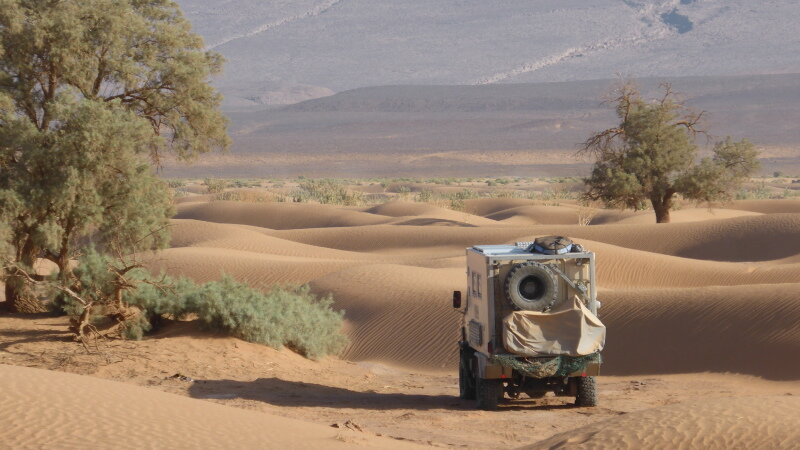Independent with solar power even in the wilderness by SOLARA
Solar systems for off-road motorhomes, four-wheel drive campers, expedition vehicles
With Solar Pothole Rodeo 2018 – Experience Report Team #106 Bullivers Travels and SOLARA Solar System
Autorally from Austria with a VW bus and solar system on the roof via Hungary, Carpathians, Moldova to the Black Sea. Back with sufficient solar power via Bulgaria, Macedonia, Albania, Montenegro, Bosnia with the destination Split.
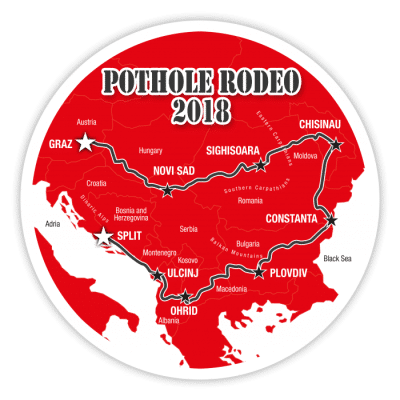
On Saturday, 7.7.2018, after a long time of preparation, the time had finally come: We started our Balkan adventure “Pothole Rodeo” in the morning at the Seiersberg Shopping City in Graz with our orange VW T3 “Bulliver” (built 1982, 50 hp, top speed: 90 km/h downhill) together with 150 other scrap car teams. Destination of our 1st stage was the second-largest city in Serbia, Novi Sad. We crossed Hungary in the direction of Croatia, and after a short transit, we headed for Serbia. At the Serbian border, we were immediately searched thoroughly, but reached Novi Sad in the evening without any problems. The Danube metropolis welcomed us gloomy and rainy and so we ended the evening with a nice dinner.
Solar power makes it possible to have enough electricity on the road. Always full batteries even far from home with solar power. A solar module charges the battery with a SOLARA charge controller even under the toughest conditions.
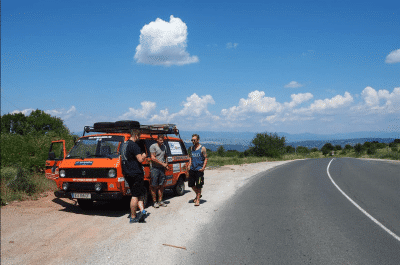 On the 2nd day, we started early: we rushed to finish the day’s challenge of the first day (to find out the cubic capacity of all 150 participating team carts) and handed over our results to the judge, who immediately presented us with the challenge of our 2nd stage: In an envelope, we received 3 Romanian Leu (approx. 0,60 €). For this, we were supposed to get as many different fruits as possible from our trusted fruit and/or vegetable dealer. We headed towards the north-east. Shortly after Timisoara, it started pouring rain and it did not take long until a Romanian car disassembled its vehicle in front of us. When we stopped to help, our van showed its first weaknesses: Due to the overloading (blower, windscreen wipers, hazard lights etc.), the V-belt stopped working and we had to rescue ourselves with difficulty on the roadside. In heavy rain, we changed the belt and drove to the next stop to dry ourselves. Because of the lost time and the remaining long-distance we chose the shortest way from here. Sighisoara (or Sighisoara) is the birthplace of Count Dracula and a romantically nooks and crannies town, which certainly hasn’t seen us the last time. :) :)
On the 2nd day, we started early: we rushed to finish the day’s challenge of the first day (to find out the cubic capacity of all 150 participating team carts) and handed over our results to the judge, who immediately presented us with the challenge of our 2nd stage: In an envelope, we received 3 Romanian Leu (approx. 0,60 €). For this, we were supposed to get as many different fruits as possible from our trusted fruit and/or vegetable dealer. We headed towards the north-east. Shortly after Timisoara, it started pouring rain and it did not take long until a Romanian car disassembled its vehicle in front of us. When we stopped to help, our van showed its first weaknesses: Due to the overloading (blower, windscreen wipers, hazard lights etc.), the V-belt stopped working and we had to rescue ourselves with difficulty on the roadside. In heavy rain, we changed the belt and drove to the next stop to dry ourselves. Because of the lost time and the remaining long-distance we chose the shortest way from here. Sighisoara (or Sighisoara) is the birthplace of Count Dracula and a romantically nooks and crannies town, which certainly hasn’t seen us the last time. :) :)

Solar power systems with top test results make electricity on the go. Mobile technology for charged batteries. Charge with solar power without a mains connection. A solar module is simply installed and charges the battery with a charge controller from SOLARA.
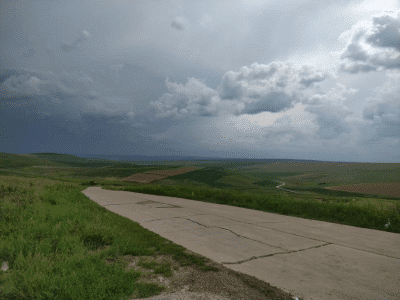 We planned our 4th stage based on our latest insights regarding the Moldavian road quality in such a way that we left the country on the fastest way to the west again to get on the good old Romanian country roads. We passed countless families on horse-drawn carts, all of them waving to us and happy to take a picture of them. Early in the evening we finally reached the Black Sea, more precisely Constanta, our most easterly destination in the past 8 days, where we immediately jumped in the cold water. In the evening we dutifully fulfilled our daily routine – drinking with locals – and were invited by our new Romanian friends to several regional spirits ;)
We planned our 4th stage based on our latest insights regarding the Moldavian road quality in such a way that we left the country on the fastest way to the west again to get on the good old Romanian country roads. We passed countless families on horse-drawn carts, all of them waving to us and happy to take a picture of them. Early in the evening we finally reached the Black Sea, more precisely Constanta, our most easterly destination in the past 8 days, where we immediately jumped in the cold water. In the evening we dutifully fulfilled our daily routine – drinking with locals – and were invited by our new Romanian friends to several regional spirits ;)
We have always had solar power. Our solar system for extreme travel best test results made power on the go. Mobile solar technology have always ensured charged batteries. Charging with solar panel is great!
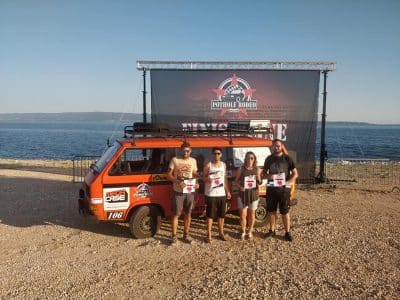 The final stage on day 8 led us through Bosnia to the beautiful Croatian city of Split, where we crossed the finish line and received our certificates.
The final stage on day 8 led us through Bosnia to the beautiful Croatian city of Split, where we crossed the finish line and received our certificates.
The longest stage of our journey, 750 kilometres, was finally our way home to beautiful Upper Austria.
According to the motto “Slowly but steadily” we were never the first at the finish line, but the other teams were always happy to see our orange van finally crawling up the mountain ;) Nevertheless: It’s a Rally, not a Race.
Our conclusion: A brilliant adventure holiday with unbelievable experiences, places and people! And who knows, maybe next year we will be back competing when the search for the last potholes in Europe continues… :)
Best regards from Team #106 Bullivers Reisen!
Lukas, Stefanie, Christian and Daniel
Free and flexible with solar panels by SOLARA
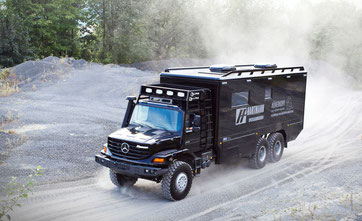
On the road in your camper you can drift away and drive where ever you want. Even in the deepest wild without any connection to the grid thanks to SOLARA-modules you don’t have to give up your stable power source. The drink in the evening, whether beer or white wine, is definitely well chilled – the photovoltaic modules on top of your mobil home will take care of that.
With our SOLARA-modules for your camper you get
- Proven solar technology for over 20 years – Made in Germany
- Top material quality – excellent workmanship – with long-term guarantees
- Particularly high electricity yields e.g. with back-contact high-tech solar cells with optimal low-light performance (even under diffuse light)
- Tested under the toughest conditions and passed every test!
- Matching charge controllers and inverters from premium manufacturers with a 5-year guarantee
- Service whenever you need us – test us!
Mobile solar module for campers – use explained simply
Bernhard Reitmeier: “When I saw it for the first time in the Freistaat camping shop in Sulzemoos, I immediately knew how useful this solar module would be”.
Bernhard Reitmeier has tested a solar module and created a short and a somewhat longer explanatory video about the mobile DCsolar Power Move solar module. These two videos explain the use, advantages and applications of the mobile solar system in a way that everyone can understand. DCsolar is a brand of SOLARA GmbH. (videos only available in German)
Short explanatory video about the use of the “Power Move” mobile solar module
Detailed explanation of the use of the “Power Move” mobile solar module






